10 Dog Training Techniques Every Owner Should Know
Transparency matters to us! This post may include affiliate links, which means we earn a small commission if you make a purchase through our recommendations. This is at no additional cost to you. Read our full affiliate disclosure.
Ever watched your neighbor’s perfectly obedient Golden Retriever sit politely at crosswalks while your own furry tornado drags you through puddles like they’re training for the Iditarod? That sinking feeling of watching other dogs respond beautifully to simple commands while your beloved companion treats “sit” as more of a suggestion than a requirement is frustratingly common. The truth is that effective dog training techniques aren’t mysterious secrets reserved for professional trainers or naturally gifted dog whisperers. Modern training methods are based on scientific research that shows how dogs actually learn, think, and respond to different approaches. Understanding these proven techniques can transform your relationship with your dog from a daily wrestling match into the partnership you originally dreamed about. Whether you’re dealing with a stubborn puppy who thinks your furniture makes excellent chew toys or an older dog with years of bad habits, the right training approach can make all the difference in creating a well-behaved, happy companion.
Key Takeaways
- Positive Reinforcement Works Best: Research consistently shows that reward-based training is more effective than punishment-based methods for long-term behavioral change
- Consistency Creates Success: All family members must use the same commands and rules to avoid confusing your dog
- Short Sessions Prevent Overwhelm: Dogs learn better in focused 5-15 minute training periods rather than marathon sessions
- Timing Matters Most: Rewards must be delivered within seconds of the desired behavior for maximum effectiveness
- Environmental Practice: Dogs need to practice commands in various locations and situations to truly understand expectations
- Professional Help Has Value: Certified trainers can identify issues early and create customized training plans for challenging behaviors
1. Positive Reinforcement Training
Positive reinforcement forms the foundation of modern dog training because it works with your dog’s natural learning patterns rather than against them. This approach focuses on rewarding behaviors you want to see repeated, creating a dog who actively chooses to make good decisions because good things happen when they do. Studies show that dogs trained with positive methods demonstrate less fear and anxiety compared to those trained with punishment-based techniques.
The science behind positive reinforcement is straightforward: behaviors that result in pleasant consequences are more likely to be repeated. When your dog sits and receives a treat, praise, or play session, their brain creates a positive association with the sitting behavior. This creates what behaviorists call “operant conditioning,” where your dog learns that their actions directly influence the outcomes they experience.
Benefits and Implementation
Effective positive reinforcement requires understanding what truly motivates your individual dog. While food treats work for many dogs, others might be more motivated by toys, praise, or play sessions. The key is finding rewards that are valuable enough to compete with distractions in your dog’s environment.
Timing is absolutely critical for success. Research indicates that rewards must be delivered within 0.5 seconds of the desired behavior to create clear associations. This means having treats ready and paying close attention to catch good behaviors the moment they happen.
Start with simple behaviors your dog already knows, like sitting for meals. Mark the moment your dog’s bottom touches the ground with a verbal marker like “good” or “yes,” then immediately deliver the reward. As your dog becomes more reliable with basic commands, you can gradually increase the difficulty and reduce the frequency of treats while maintaining praise and attention.
2. Consistency and Routine
Dogs thrive on predictability, and inconsistent training creates confusion that slows progress and can actually make problem behaviors worse. When family members use different commands for the same behavior or enforce rules randomly, dogs struggle to understand expectations and may stop responding altogether.
Behavioral research shows that dogs learn faster and retain information better when training approaches remain consistent across all interactions. This means everyone in your household needs to use the same verbal cues, hand signals, and reward systems to avoid sending mixed messages.
Establishing consistent rules also means deciding what behaviors are acceptable before training begins. If jumping on the couch is sometimes okay but sometimes not, your dog will continue testing boundaries because they never know which rule applies in any given moment.
Family Training Alignment
Getting everyone on the same page requires a family meeting where you establish specific protocols for common situations. Write down the exact words you’ll use for each command, decide who is responsible for feeding and exercise schedules, and agree on house rules that everyone will enforce consistently.
Create a training chart that lists your dog’s known commands, the specific words or signals used, and the appropriate rewards. Post this somewhere visible so family members can reference it during interactions. This is especially important with children, who may inadvertently teach dogs unwanted behaviors by inconsistently applying rules.
Practice sessions should involve all family members taking turns giving commands and rewarding appropriate responses. This helps your dog generalize their training to respond to everyone in the household, not just the primary trainer.
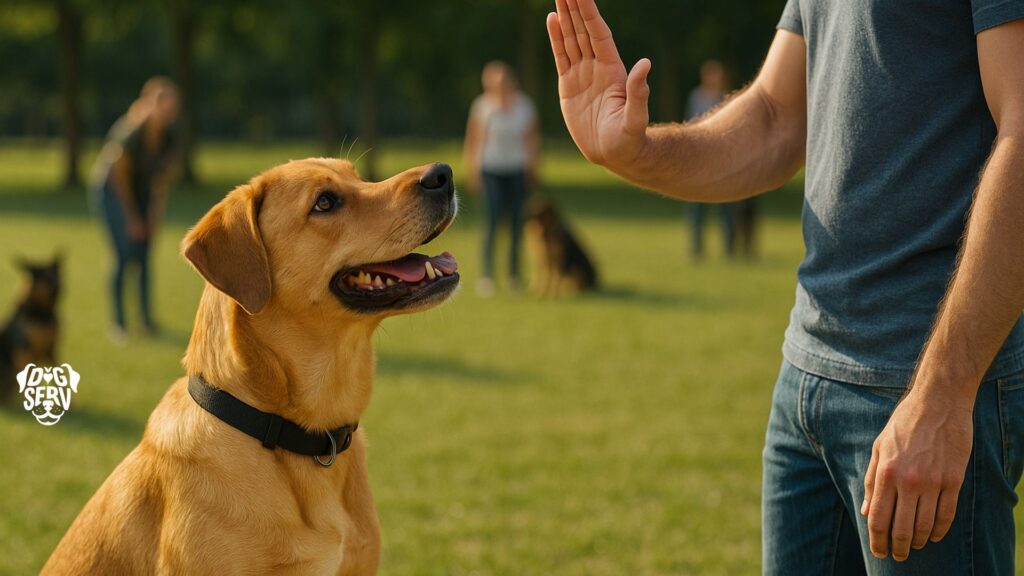
3. Short, Frequent Training Sessions
Canine attention spans are naturally limited, especially when learning new behaviors or practicing in distracting environments. Most dogs can focus effectively for 5-15 minutes before mental fatigue sets in and learning decreases significantly.
Short, frequent sessions are more effective than longer training periods because they prevent mental exhaustion while providing multiple opportunities for repetition. This approach also fits better into busy schedules, making it easier to maintain consistent training routines.
Young puppies and senior dogs typically have even shorter attention spans, requiring sessions of just 3-5 minutes. High-energy breeds may be able to focus longer, but even these dogs benefit from multiple short sessions throughout the day rather than one extended training period.
Session Structure and Timing
Structure each training session with a clear beginning, middle, and end. Start with a simple command your dog knows well to build confidence, practice new or challenging behaviors in the middle when attention is strongest, and finish with another easy success to end on a positive note.
The best times for training are often before meals when dogs are naturally more food-motivated, after exercise when energy levels are manageable, or during natural breaks in your daily routine. Avoid training when your dog is overly excited, tired, or stressed, as these states make learning difficult.
Keep detailed records of what you practice in each session and how your dog responds. This helps you identify patterns in your dog’s learning and adjust your approach based on what works best for your individual companion.
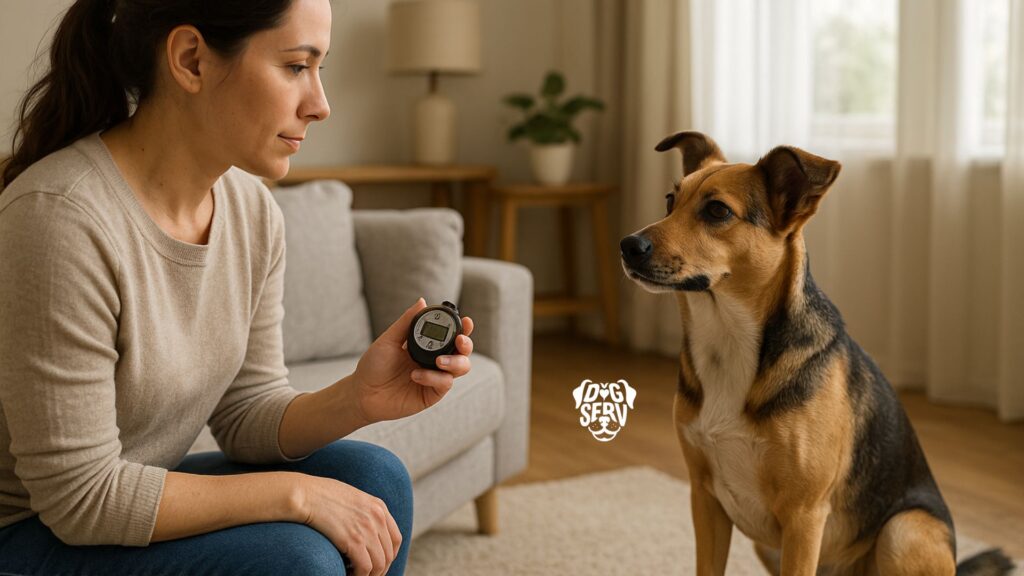
4. Science-Based and Relationship-Based Methods
Modern dog training has evolved significantly from outdated dominance-based approaches that often created more problems than they solved. Current research emphasizes understanding canine psychology and emotional states rather than trying to establish human dominance over dogs.
Science-based training recognizes that dogs are individuals with unique personalities, learning styles, and motivations. This approach focuses on working with your dog’s natural behaviors and instincts rather than trying to suppress them through force or intimidation.
Relationship-based training emphasizes building trust and communication between you and your dog. When dogs feel secure and understood, they’re more likely to cooperate willingly rather than comply out of fear. This creates a stronger bond and more reliable long-term behavior.
Reading Your Dog’s Signals
Learning to interpret your dog’s body language is essential for effective training. Stress signals like panting, pacing, or inability to focus indicate that your dog needs a break or that the training environment needs adjustment. Understanding these signals helps prevent negative associations with training.
Positive body language includes relaxed posture, soft eyes, and eagerness to engage. When your dog displays these signals, they’re in an optimal state for learning, and you can continue or increase the difficulty of your training session.
Watch for signs that your dog is becoming overwhelmed, such as excessive yawning, lip licking, or trying to leave the training area. These behaviors indicate that you should reduce difficulty, take a break, or end the session on a positive note.
5. Finding the Right Motivators
Not all dogs are motivated by the same rewards, and understanding what truly excites your individual dog is crucial for training success. Research shows that motivation varies significantly between individual dogs, even within the same breed or household.
Food motivation works well for many dogs, but the type and value of treats matters enormously. High-value treats like small pieces of chicken, cheese, or commercial training treats often work better than regular kibble, especially in distracting environments.
Some dogs are more motivated by toys, play sessions, or social interaction than by food. Toy-motivated dogs might work harder for a quick game of tug than for any treat, while social dogs may find praise and petting more rewarding than food or toys.
Testing and Identifying Preferences
Conduct simple preference tests to identify your dog’s strongest motivators. Offer different types of treats simultaneously and note which ones your dog chooses first or shows the most excitement about receiving.
Test non-food motivators by observing what your dog naturally gravitates toward during play time. Some dogs prefer balls, others like rope toys, and some are most excited by interactive play with their human family members.
Create a hierarchy of motivators from most valuable to least valuable. Use your highest-value motivators for teaching new behaviors or practicing in challenging environments, saving lower-value rewards for maintaining behaviors your dog already knows well.
6. Clicker and Marker Training
Clicker training uses a consistent sound to mark the exact moment your dog performs a desired behavior, creating precise communication that transcends language barriers. The clicking sound becomes a conditioned reinforcer that tells your dog they’ve done something right and a reward is coming.
The power of clicker training lies in its timing precision. While it takes humans time to say “good dog” and deliver a treat, the click happens instantly and consistently, making it easier for dogs to understand exactly which behavior earned the reward.
Marker training works on the same principle but uses a verbal marker like “yes” or “good” instead of a clicker. This can be more convenient since you always have your voice available, though it requires more consistency in tone and timing than mechanical clickers.
Implementation Techniques
Begin clicker training by creating positive associations with the sound itself. Click and immediately give your dog a treat, repeating this process 10-15 times until your dog shows excitement when they hear the click sound.
Once your dog understands that click equals treat, start using the clicker to mark specific behaviors. Click the instant your dog sits, then deliver the treat. The timing of the click is more important than the timing of the treat delivery.
Practice clicking for simple behaviors your dog already knows before attempting to teach new commands. This helps both you and your dog become comfortable with the timing and process before tackling more challenging training goals.
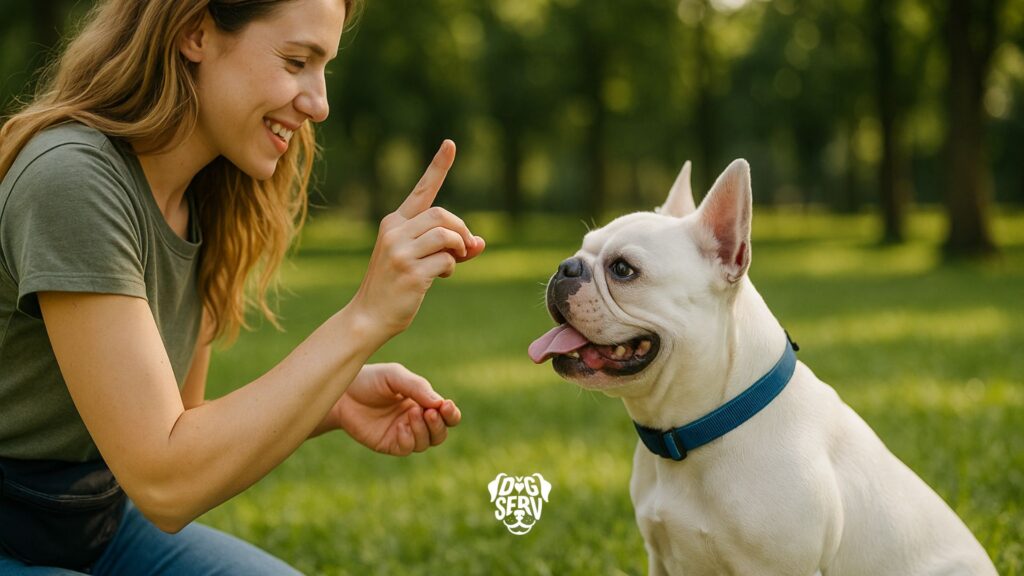
7. Environmental Training and Generalization
Dogs don’t automatically understand that “sit” in your living room means the same thing as “sit” in the park or at the veterinarian’s office. Generalization requires systematic practice in various environments with gradually increasing levels of distraction.
Start training in quiet, familiar environments where your dog can focus easily, then gradually add distractions and change locations as behaviors become more reliable. This systematic approach prevents your dog from becoming overwhelmed while building real-world reliability.
Environmental training also helps identify situations where your dog struggles most, allowing you to provide extra practice in those specific contexts. A dog who sits perfectly at home but ignores commands at the dog park clearly needs more practice in social environments.
Progressive Distraction Training
Begin with minimal distractions in a familiar environment, then gradually increase difficulty as your dog’s responses become more consistent. This might mean starting in a quiet room, progressing to the backyard, then to the front yard, and eventually to busy parks or streets.
Add one new challenge at a time rather than changing multiple variables simultaneously. If you’re working on “stay” commands, practice longer durations before adding distance, and master both before introducing environmental distractions.
Use higher-value rewards when practicing in more challenging environments. A treat that works well in your kitchen might not be motivating enough to compete with the excitement of a busy park, so adjust your reward system accordingly.
8. Breaking Complex Behaviors into Steps
Complex behaviors like reliable recall or extended stay commands can’t be taught all at once. Successful training requires breaking these behaviors into smaller, manageable steps that build upon each other progressively.
This approach, called “shaping,” allows dogs to succeed at each step while gradually working toward the final goal. It’s much less frustrating for both dog and trainer than expecting perfect performance from the beginning.
Each step should be easy enough that your dog can succeed 80% of the time. If your dog is struggling or frequently making mistakes, the steps are probably too large and need to be broken down further.
Step-by-Step Methodology
Start by identifying the final behavior you want to achieve, then work backward to determine the individual components. Teaching “stay” might begin with your dog remaining in position for just one second while you’re directly in front of them.
Practice each step until your dog responds consistently before moving to the next level of difficulty. For stay commands, this might mean gradually increasing duration before adding distance, then practicing in different locations.
Celebrate small victories throughout the process. Your dog doesn’t know you’re working toward a complex final behavior; they just know they’re succeeding at each step, which builds confidence and motivation to continue learning.
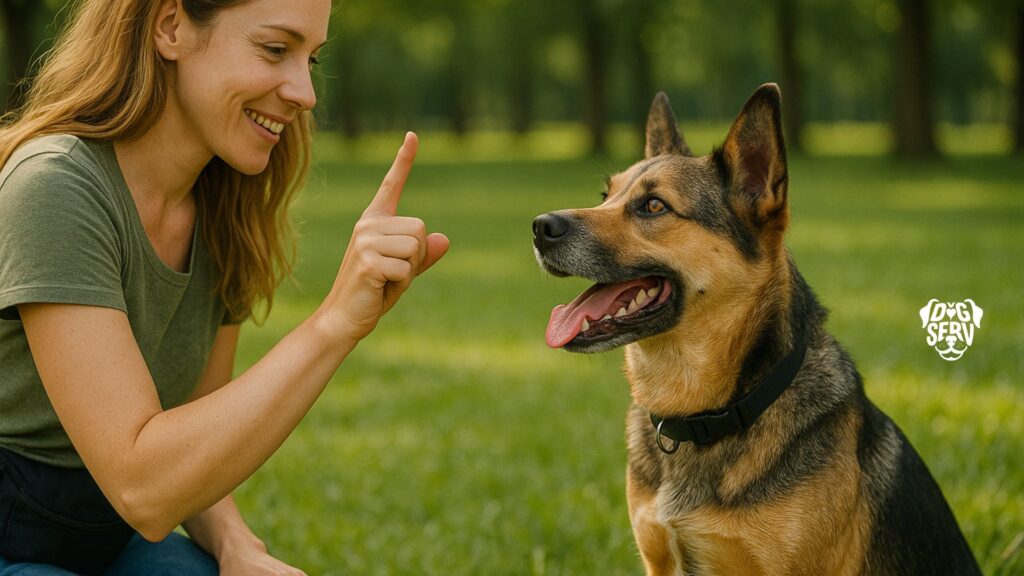
9. Essential Command Training
Every dog should know basic commands that ensure safety and make daily life more enjoyable for everyone. These foundation commands include sit, stay, come, down, leave it, and heel, each serving specific practical purposes in real-world situations.
Safety-related commands like “come” and “leave it” can literally save your dog’s life in situations involving traffic, dangerous objects, or aggressive animals. These commands deserve extra attention and practice in various environments.
Management commands like “sit” and “stay” make daily interactions smoother, from greeting visitors to waiting patiently for meals. When these behaviors become habitual, both you and your dog experience less stress in everyday situations.
Command Priority and Progression
Begin with “sit” because it’s typically the easiest command for dogs to learn and provides a foundation for other behaviors. A dog who sits reliably can be taught to sit before meals, when meeting people, or before going through doorways.
“Stay” builds directly on the sit command and teaches impulse control that applies to many other situations. Start with very short durations and minimal distance, gradually increasing both as your dog becomes more reliable.
“Come” is perhaps the most important safety command but also one of the most challenging to teach reliably. Never call your dog to come for something they perceive as negative, and always reward coming when called, even if they were misbehaving before you called them.
10. Professional Guidance and Avoiding Harmful Methods
Knowing when to seek professional help can save you months of frustration and prevent minor issues from becoming major problems. Certified trainers can identify underlying causes of behavioral issues that might not be obvious to pet owners.
Professional guidance is especially valuable for aggression issues, severe anxiety, or persistent problems that don’t respond to basic training approaches. These situations often require specialized techniques and safety protocols that general training advice can’t address.
Unfortunately, the dog training industry includes practitioners who still use outdated, punishment-based methods that can worsen behavioral problems. Learning to identify and avoid these approaches protects your dog from unnecessary stress and potential behavioral damage.
Red Flags in Training Methods
Avoid trainers who emphasize dominance, alpha rolls, or the need to show your dog “who’s boss.” Modern animal behavior research has thoroughly debunked dominance-based training theories, and these methods often increase fear and aggression rather than solving problems.
Be cautious of trainers who rely heavily on punishment tools like shock collars, prong collars, or citronella sprays as primary training methods. While these tools might suppress unwanted behaviors temporarily, they don’t teach dogs what they should do instead and can create anxiety around training.
Look for trainers who emphasize positive reinforcement, explain the science behind their methods, and focus on building your relationship with your dog rather than establishing dominance. Certified trainers through organizations like CCPDT or KPA typically follow more modern, effective approaches.
Common Training Mistakes to Avoid
The most common training mistakes often stem from well-meaning but misguided approaches that can actually slow progress or create new problems. Inconsistency in commands, timing, or expectations confuses dogs and makes learning more difficult than it needs to be.
Punishment-based corrections for mistakes during training create anxiety around learning and can make dogs reluctant to try new behaviors. Dogs learn better when they feel safe to experiment and make mistakes without negative consequences.
Rushing progress by skipping steps or practicing in environments that are too challenging sets both dog and trainer up for failure. Building solid foundations in easy environments prevents frustration and creates more reliable long-term results.
Training when you’re frustrated or impatient communicates stress to your dog and makes productive learning nearly impossible. Dogs are incredibly sensitive to human emotions, and your mood directly affects their ability to focus and learn.
Building Training into Daily Life
The most successful training programs integrate practice opportunities into normal daily routines rather than limiting training to formal sessions. Every interaction with your dog is a potential training moment that can reinforce good behaviors or accidentally reward unwanted ones.
Meal times provide natural opportunities to practice sit, stay, and impulse control. Having your dog sit and wait before placing their food bowl down reinforces calm behavior and establishes helpful routines around feeding time.
Walks offer countless chances to practice loose leash walking, attention cues, and greetings with people and other dogs. Rather than viewing walks purely as exercise time, consider them mobile training sessions where real-world skills can be developed and refined.
Door greetings, car rides, and bedtime routines all present opportunities to reinforce training while making daily life more pleasant. When training becomes integrated into normal activities, both consistency and progress improve naturally.
Frequently Asked Questions About Dog Training Techniques
Q: How long does it take to see results with positive reinforcement training?
A: Most dogs show initial improvement within 1-2 weeks of consistent practice, though complex behaviors or deeply ingrained habits may take several months to fully modify. The key is celebrating small improvements while maintaining realistic expectations about the timeline for significant behavioral changes.
Q: What if my dog doesn’t respond to treats as rewards?
A: Try different types of food rewards, including fresh meat, cheese, or commercial training treats with stronger smells and flavors. If food isn’t motivating, experiment with toys, praise, play sessions, or social interaction to find what truly excites your individual dog.
Q: Can older dogs learn new training techniques?
A: Absolutely! While puppies may learn faster, dogs of all ages can master new behaviors with appropriate methods and patience. Older dogs often have better attention spans than puppies, which can actually make training easier once you find the right motivators.
Q: How do I know if I need professional help?
A: Consider consulting a certified trainer if you’re dealing with aggression, severe anxiety, destructive behaviors, or if you’re not seeing improvement after several weeks of consistent training. Professional guidance can identify underlying issues and create specialized training plans.
Q: What’s the difference between clicker training and regular positive reinforcement?
A: Clicker training provides more precise timing and clearer communication through the consistent marker sound, while regular positive reinforcement relies on verbal praise and treats. Both work well, but clickers can be especially helpful for teaching complex behaviors or working with easily distracted dogs.
Final Thoughts
Effective dog training isn’t about finding magical shortcuts or establishing dominance over your canine companion. It’s about understanding how dogs actually learn, communicating clearly through consistent methods, and building a relationship based on trust and mutual respect. The techniques outlined here represent decades of scientific research into canine behavior and learning, offering proven approaches that work with your dog’s natural instincts rather than against them.
Remember that every dog is unique, and what works perfectly for your neighbor’s Lab might need modification for your Border Collie or rescue pup. The key is starting with these foundational principles while remaining flexible enough to adjust your approach based on your dog’s individual personality and learning style.
Training success requires patience, consistency, and realistic expectations about the timeline for behavioral changes. Most dogs don’t transform overnight, but with dedicated practice using these science-based methods, you can build the strong partnership you’ve always wanted with your furry family member.
If you’re feeling overwhelmed by training challenges or want to accelerate your progress with professional guidance, DogServ specializes in personalized training plans that work with your dog’s unique needs and your family’s lifestyle. Our staff understands that successful training is about building relationships, not breaking spirits, and we’re here to help you and your dog achieve your goals together.
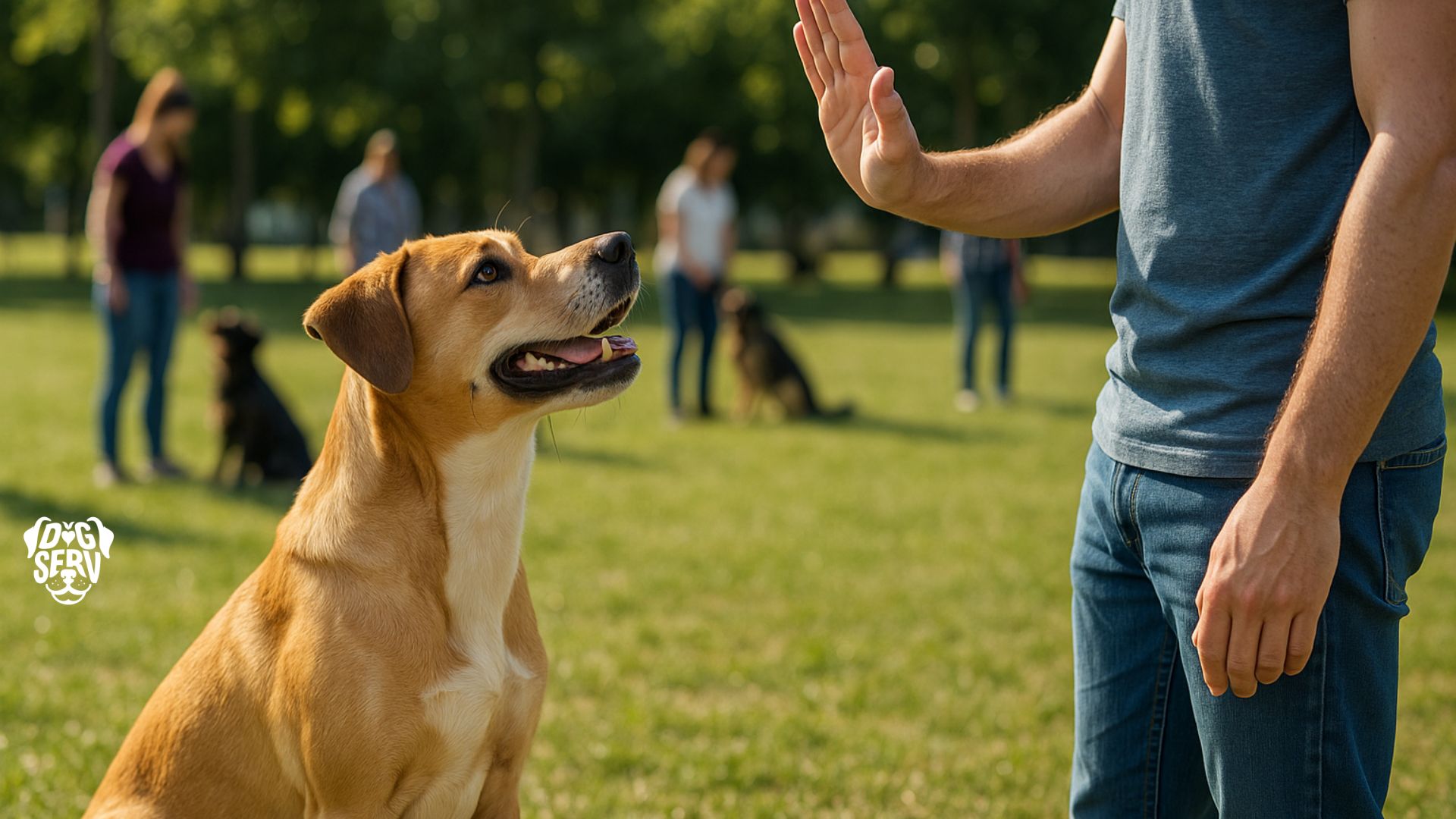

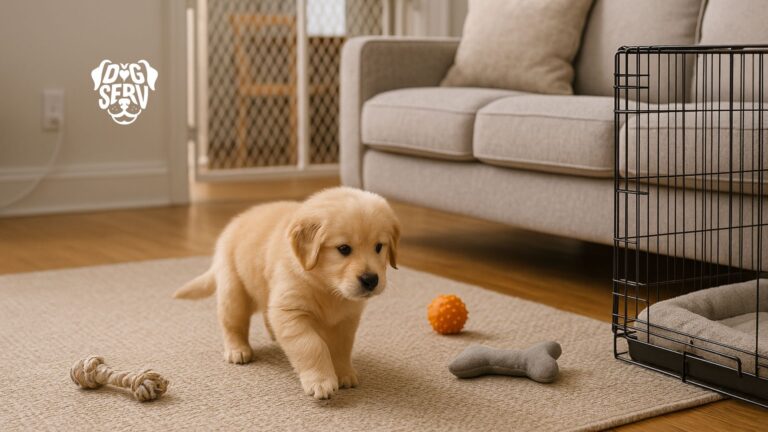
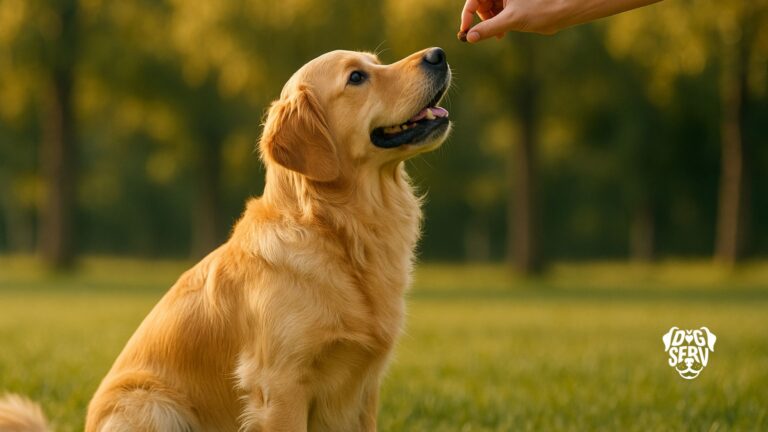
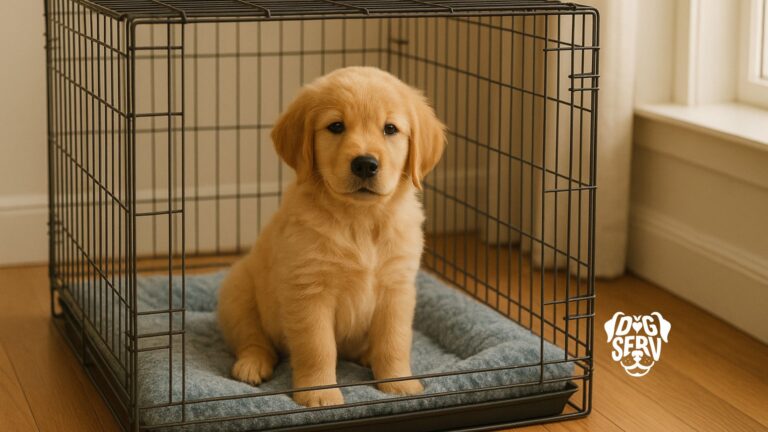

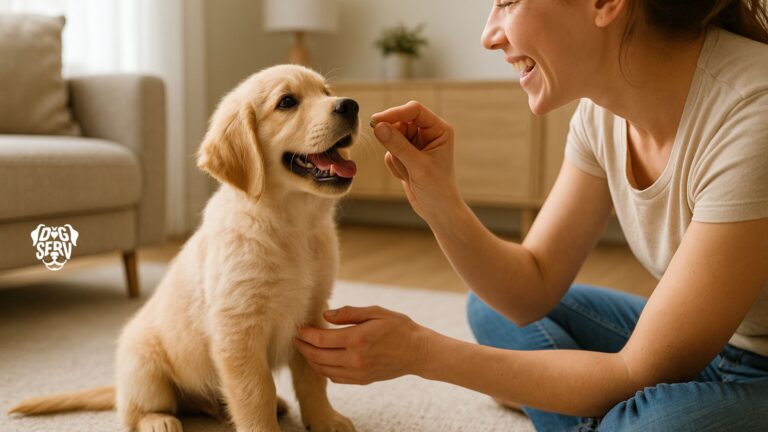
Calvin Hewitt is the primary author and driving force behind DogServ, bringing over 27 years of business expertise and 7 years of specialized digital marketing experience to the dog service industry. As the founder of Web Leveling and architect of DogServ’s evolution from a simple directory to a comprehensive one-stop shop for dog lovers, Calvin has created highly performing dog training websites in competitive markets, developed popular applications like “Can My Dog Eat?” and “Puppy Planning Checklist,” and generated thousands of monthly page views with his dog service content. Based in the Houston area but serving dog lovers and service providers nationally and internationally, Calvin works alongside a dedicated team of seven professionals, combining analytical rigor from his banking and energy industry background with a genuine passion for connecting dog owners, dog lovers, and service providers through quality content, innovative applications, and trusted recommendations.